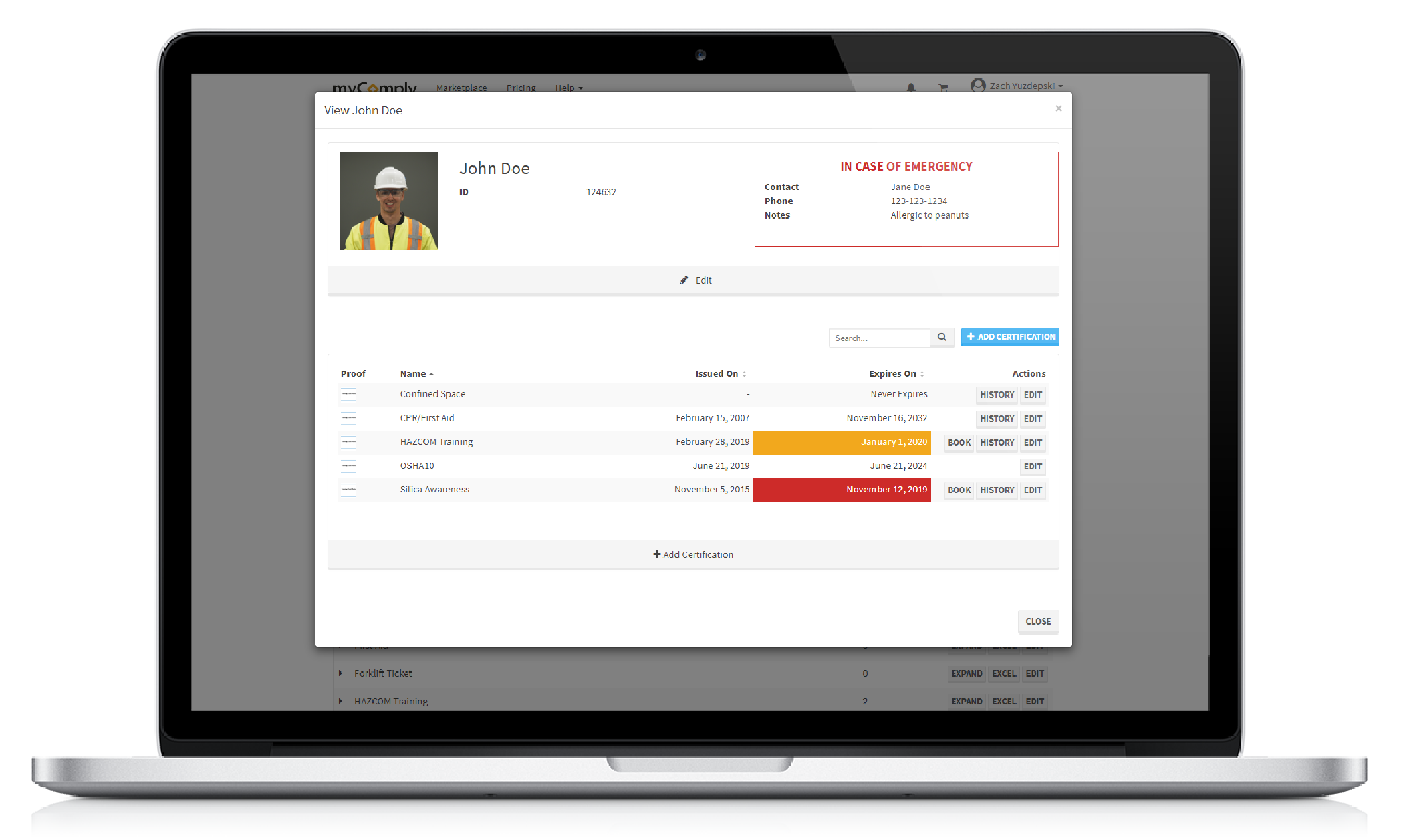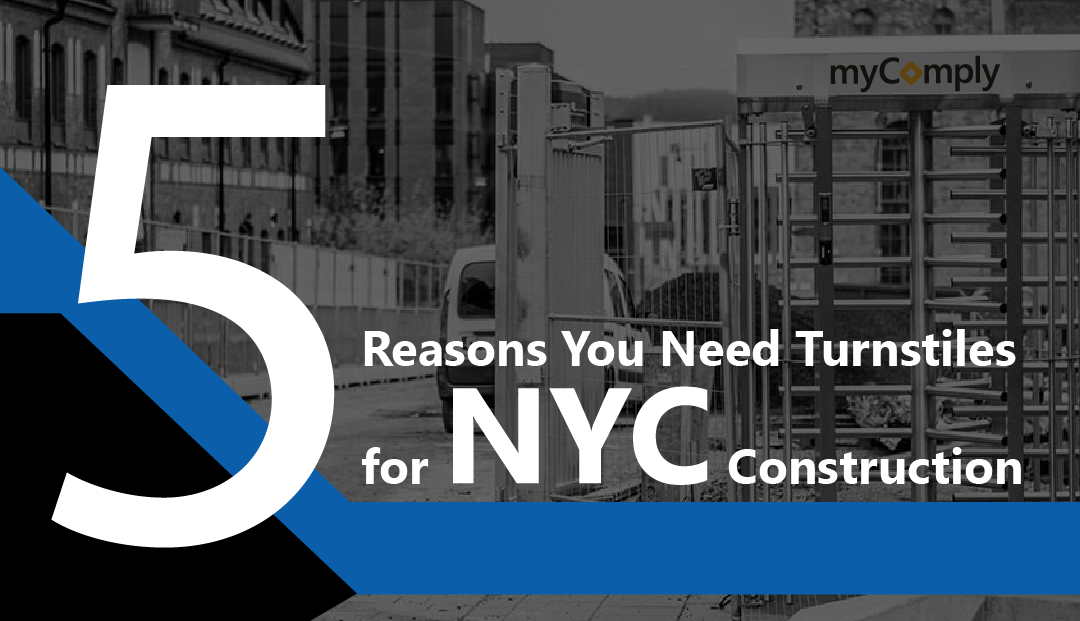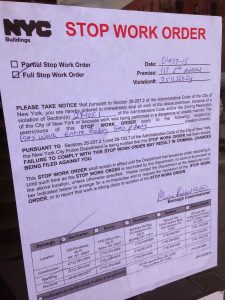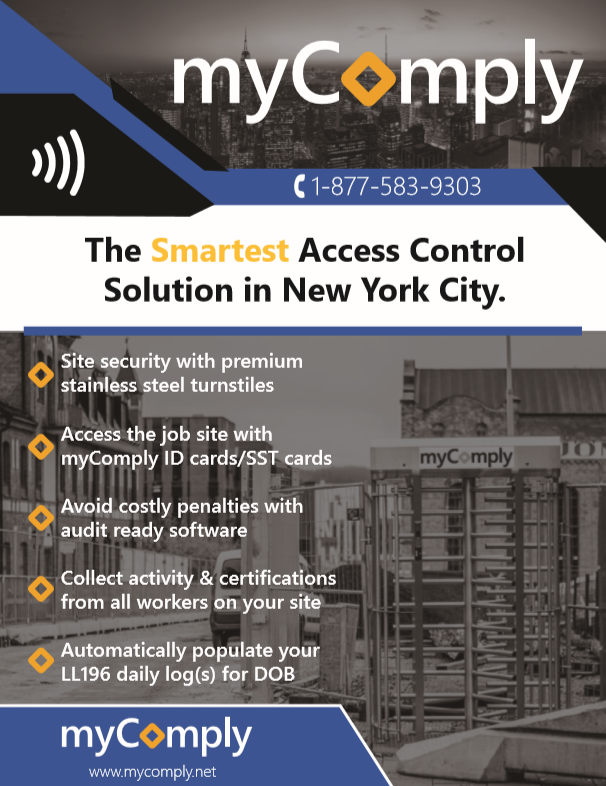Turnstiles are a level of access control that safeguard a job site, preventing workers or pedestrians from freely accessing your site. This prevents the site from being vandalized, damaged, and safely stores equipment on site. But this is NOT the reason contractors use turnstiles.
Why does the construction industry use turnstiles?
Because they want to protect themselves from the liability associated with injuries or dangerous behaviors on their job site. This includes ensuring no untrained workers are performing tasks that may be dangerous to themselves or others.
The costs of legal fines or stop work orders are too critical to ignore. In New York City, Local Law 196 mandates that NYC contractors keep tight oversight on information related to attendance of workers on their job site. The city’s Department of Buildings mandates that contractors keep up-to-date attendance logs of their job site(s), meaning a contractor needs to know which workers are on their site every day.
Why should New York City contractors consider implementing access control solutions such as turnstiles on the job site?
Read below:
#1: To Comply with Local Law 196 & Avoid Penalties
Contractors who have access control systems, like turnstiles, in place are more likely to have better management/tracking of who is on their job site and when. Local Law 196 in New York City holds construction organizations accountable for all workers on their job site, if a permit holder on a site is not able to produce a daily attendance log of their site, they are subject to major fines.
“How would a turnstile save my job site from fines related to Local Law 196?”
- You (the permit holder) control which workers come onto your site, and ensure that those who are granted access to your site have the proper training. This saves you from $5000/worker fines upon DOB site audit.
- You (the permit holder) can populate a daily attendance log accurately as you know all workers on your site are coming through defined entrances and logging their check-in/out instances. An accurate log saves your site from a $2500 civil penalty.
Permit holders are required to attest to DOB that workers are trained. A violation with a civil penalty of up to $5,000 per untrained worker will be issued to the owner of the site, the permit holder, and the employer of the untrained worker.
– NYC Department of Buildings (Source)
A violation with a civil penalty of $2,500 will also be issued if a permit holder fails to maintain a log that proves all of the workers at a site are trained.
– NYC Department of Buildings (Source)
#2: To Ensure Permit Holders Protect Pedestrians
By fencing off a site and only giving access to an active construction site through turnstiles, you ensure you are not only protecting yourself but you’re protecting pedestrians in the area. New York City is one of the largest city’s in the world, and with that comes enormous foot-traffic. A permit holder is not just responsible for workers, they are responsible for the safety of the general public in/around their site as well.
Pedestrian Statistics, New York City:
- On the busiest days, Times Square has pedestrian counts as high as 450,000 (Times Square NYC).
- 56.5% of New York households did not own a car — by far the highest out of any American city, this leaves 10.3% of people walking to work every day (24/7 Wall Street).
- From 2008 through 2014, there were 96 construction accidents involving pedestrians and other passersby in the city resulting in 155 injuries. More than 75 percent of these accidents occurred in Manhattan (NYC DOB)
There is no question that construction companies and on-site construction managers are responsible for ensuring site safety – not just for their own employees and contractors, but also for pedestrians and passersby.
– Ken Wilhelm, The Law Offices of Kenneth Wilhelm (Source)
“How do turnstiles keep the general public safe?”
Turnstiles do a great job of keeping pedestrian traffic away from your site. With so much foot traffic in the big apple, New York City pedestrians have an easy visual cue to stay away from sites with noticeable prevention measures such as turnstiles. Without an authorized ID badge or SST Card, an individual from the general public is not able to access your site, only workers who are approved to be there.
#3: To Avoid Stop Work Orders
A stop work order comes with a variety of hindrances and pains for the permit holder. Not only do you have to stop work immediately, you have to remedy the situation before you get back to work and pay whatever civil penalties are associated to your stop work order. This can be very costly on a project basis as you may have to push back deadlines, move subcontractors who were scheduled to work, and adjust timelines on completion.
A stop work order is issued in New York City when (NYC DOB):
- The work violates construction codes
- The work violates zoning restrictions
- The work violates any law outlined by the Department of Buildings
- The work performed at a site is being done in an unsafe manner
“How does a turnstile prevent stop work orders in New York City?”
A turnstile is capable of only allowing access to individuals with SST Cards and the proper training related to LL 196. If a site is only allowing highly-trained individuals on site, they minimize their risk greatly of having unsafe work or dangerous tasks performed on their job site. Safety starts with safety training, the goal of Local Law 196 enacted in 2017 and with training comes less unsafe work. Less unsafe work = less stop work orders related to lack of safety.
#4: Protect Your Assets
Construction site theft is a real big pain for contractors all over the world. Especially because a lot of the time it can go unnoticed on large sites. If you have a construction site that is freely accessible to the general public, passerby traffic may wander on to your site to explore what they can take.
The National Equipment Register (NER) estimates the value of construction equipment stolen each year is somewhere between $300 million to $1 billion. That estimate is for equipment only and doesn’t include tools and building materials which are often easy targets for thieves (Construct Connect, 2017).
In addition, only 25% of stolen materials are ever recovered. That means people are walking away from your site each year with your tools, appliances, machinery, and supplies.
“How does a turnstile protect your assets?”
A good access control system prevents unwanted visitors and thieves from freely walking on your site. A turnstile is a check-in point that allows you to gather data and funnel in traffic through designated entrances. With myComply turnstiles you always know who is on your job site, in real-time. Not only are you keeping individuals out, but if something were stolen on a particular day you would know the people, and subcontractors who were present.
#5: Data Collection & Insurance
This is the big differentiation between a turnstile, and a full access control solution that utilizes turnstiles at entry points. Turnstiles do a great job of funneling traffic, and only allowing authorized workers on site. But, smart access control solutions allow the permit holder or general contractor to collect a TON of valued information at these access points.
What type of information is generated with myComply turnstiles & access control? With myComply’s solution, you’re able to see data such as:
- Which workers are on your job site
- When the worker got there, and when they left
- Who they work for, attaching them to the sub-trade/subcontractor they’re employed with
- What training the worker has, and confirming if they have an SST Card
To make things even better, you can monitor all of this in real time!
This is important for conversations with insurance teams or asset owners as they are looking to see that a contractor is taking appropriate measures to ensure all individuals on site are appropriately trained. Once again, liability falls on the permit holder in New York City and permit holders can avoid accidents or dangerous work when all individuals are properly trained.

“How does a turnstile collect data?”
If the ID Badges you use store vital safety information, and the turnstile you use is connected to smart software, then you can do a whole lot of interesting data collection. When a worker checks in with their credentials, and the turnstile rotor moves this worker has just sent vital information to myComply. They send when they arrived, who they work for, and share all of their safety credentials and certifications. The myComply SST Card and Smart Badge in New York City is the only ID Badge that will allow you such detailed data and reporting on the compliance of your job site.
Download our PDF Brochure for more info!
If you’re looking for access control solutions in New York City, we’re confident we have built the best solution for New York City Construction. Take a look at the brochure below, download it, print it off and share as you need.
Call us for more information at 1-877-583-9303 or email sales@mycomply.net for a quote!

How to download:
1. Click on the Image of the Brochure (BELOW).
2. Use the link to download a PDF version of the brochure.





